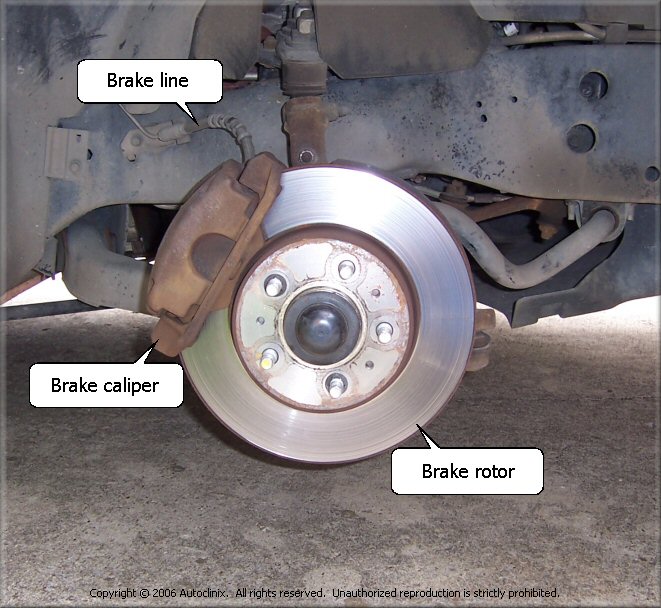Like most car parts, brakes wear out. It is hard to define how long brake life is because it depends on how they are driven. Brake pads can last about 30,000 to 70,000 miles. They usually let you know they are going bad when they start to squeal. But they do not always do that. It is a good idea to get them checked periodically. A good time is when you rotate your tires. If your mechanic does not suggest checking your brakes, remind him/her. We at Hi-Tech Car Care will suggest it to you.
Most cars today are equipped with drum brakes, disc brakes or a combination of the two. The majority of cars have disc brakes on the front wheels and drum brakes on the rear wheels.
Drum Brakes
Drum brakes consist of an outer shell which is attached to the wheel and rotates with it. Inside the drum are a pair of brake shoes which are pressed into the inside of the drum by hydraulic pressure when the brake pedal is depressed. The brake shoes are curved to match the inside of the drum and ride in close proximity to the drum without touching it. The brake shoes are kept from touching the drum by a set of springs and the distance between the drum and shoes is controlled by an adjusting mechanism. In use the brake shoes gradually wear down and the distance between the drum and the shoes must be adjusted. In older cars the brakes needed to be periodically adjusted by hand but modern cars have automatic adjusting mechanisms which operate either when the car backs up or when the emergency brake is applied. Eventually The brake shoes will wear down to the point where they have to be replaced; this is the most common type of service required for drum brakes. If the brake shoes are allowed to wear down too far they can score the inside surface of the drum. When this happens the brake drum must be either refinished or replaced.
Disc brakes
The operating principle behind disc brakes is similar to drum brakes but they are easier to service. Disc brakes consist of a rotating disc which is attached to the wheel. A caliper is mounted at the edge of the disc which carries one or more pistons which act on pads in contact with the disc. When the brake pedal is depressed, hydraulic forces squeeze the disc between the pads. There are no springs to retract the brake pads and they are in constant light contact with the disc. There is no need to adjust disc brakes since the pads do not fully retract when the brake pedal is released. Similarly to drum brakes; the pads need to be changed when they become worn and this is the most common service performed on disc brakes. If the brake pads are allowed to wear down too far they can score the surface of the disc. When this happens the disc must be either refinished or replaced.
Emergency Brake
The emergency brake should more correctly be called the parking brake. The emergency brake should not be used for stopping unless it is absolutely necessary. In modern cars the emergency brake operates on the rear wheels using a mechanical linkage instead of the hydraulic actuation used by the main braking system. The mechanical linkage consists of a cable inside a carrier. The emergency brake should be operated occasionally to make sure that the cable has not siezed inside the carrier.
Service
The brake system should be inspected for leaks at each oil change and the brake pads, shoes, rotors, drums, brake lines & hoses and parking brake system should be inspected at each tire rotation.






